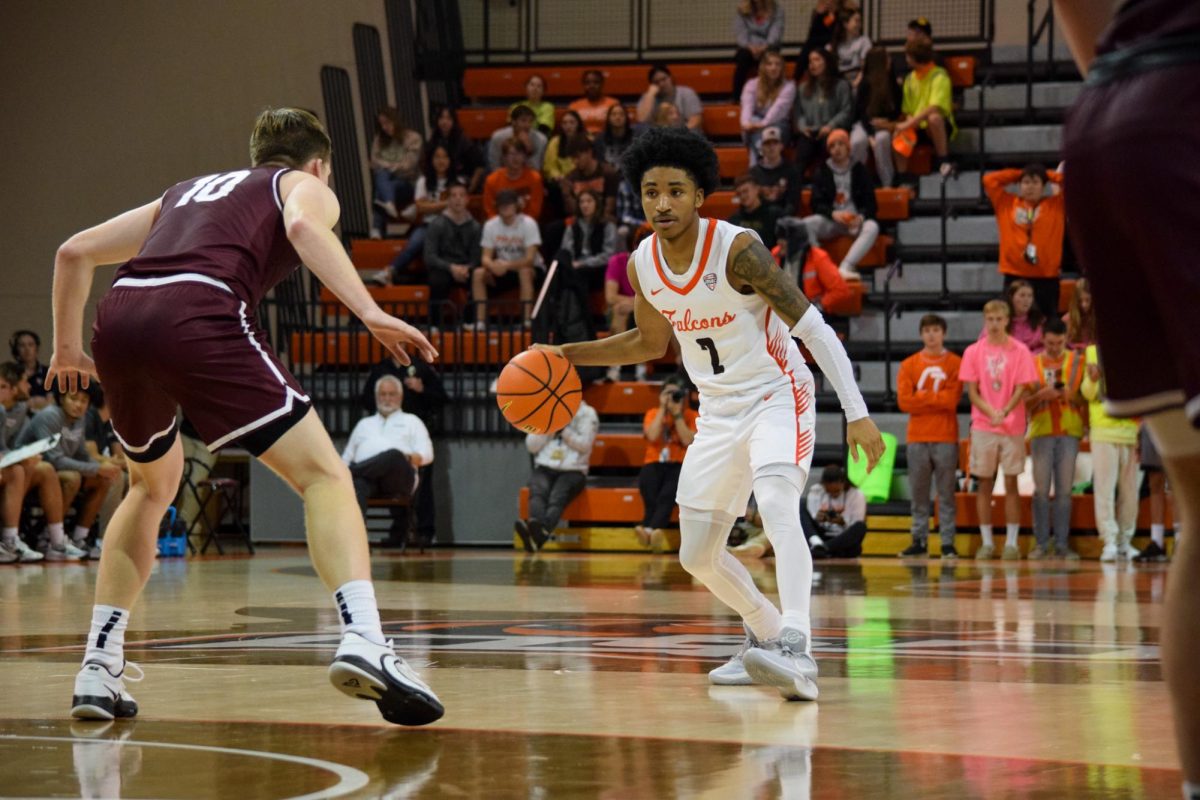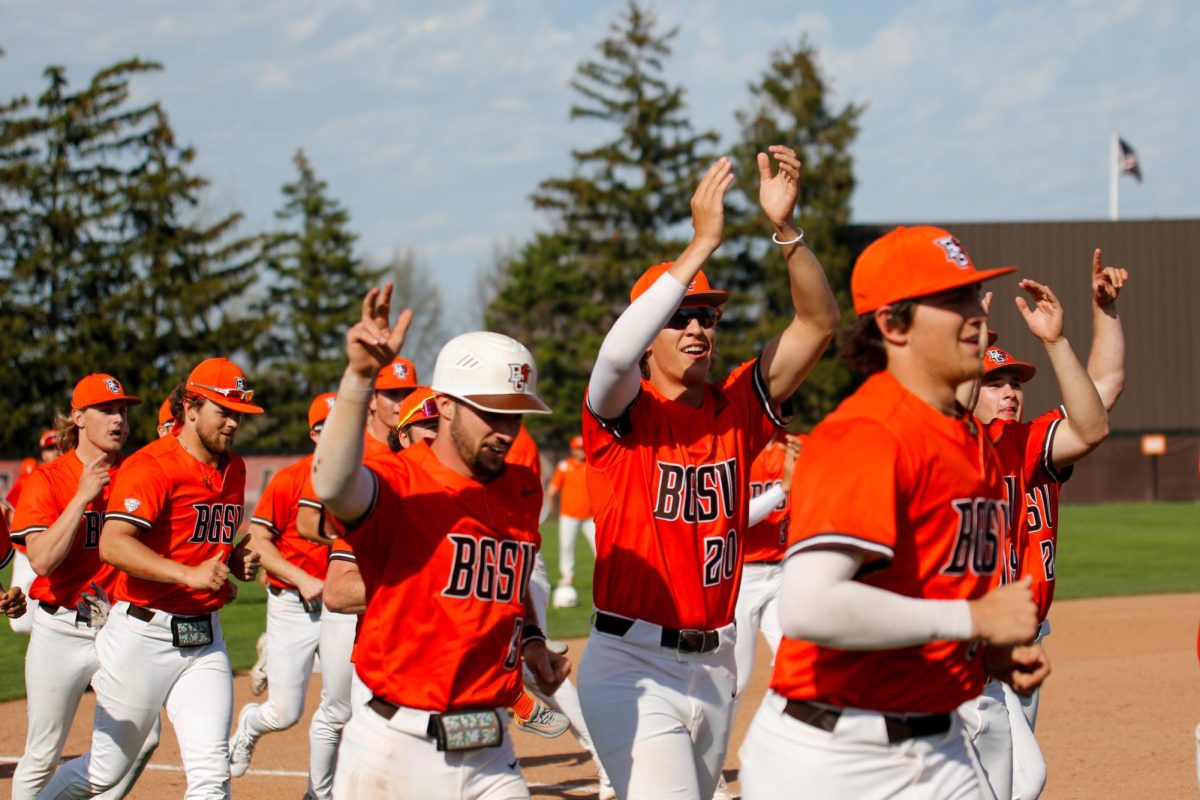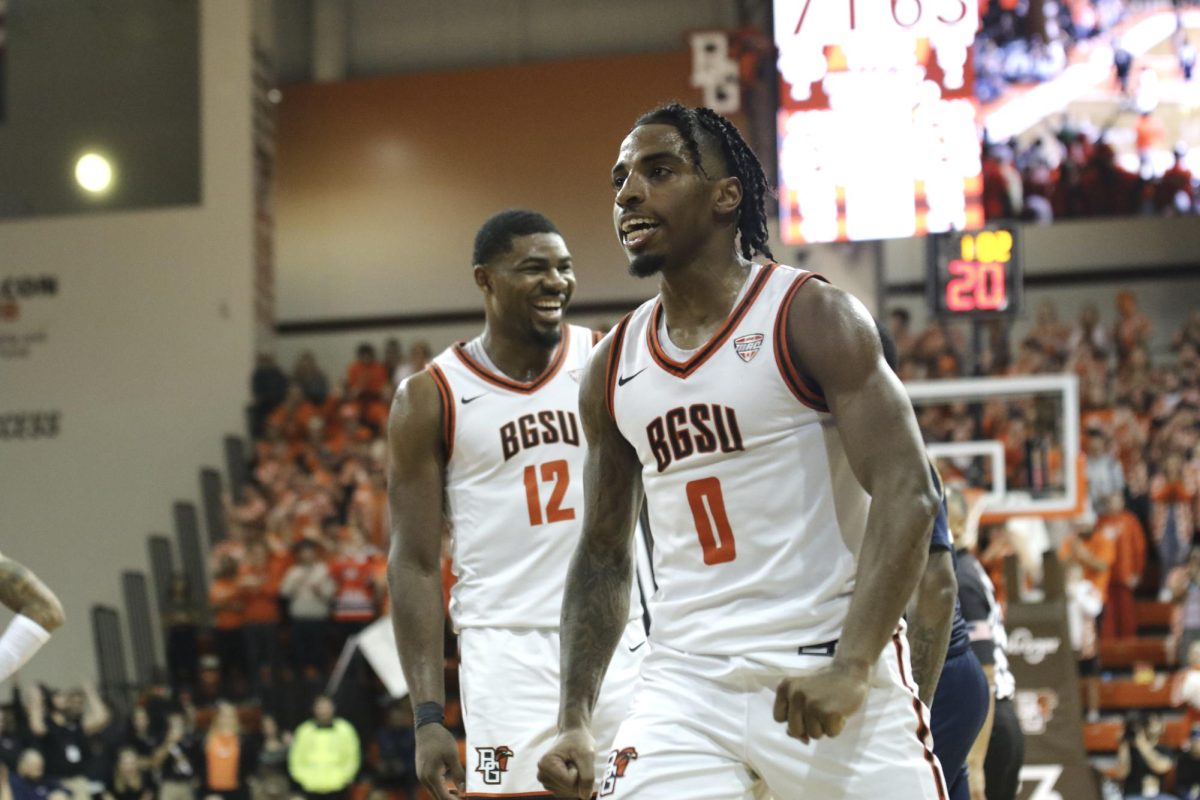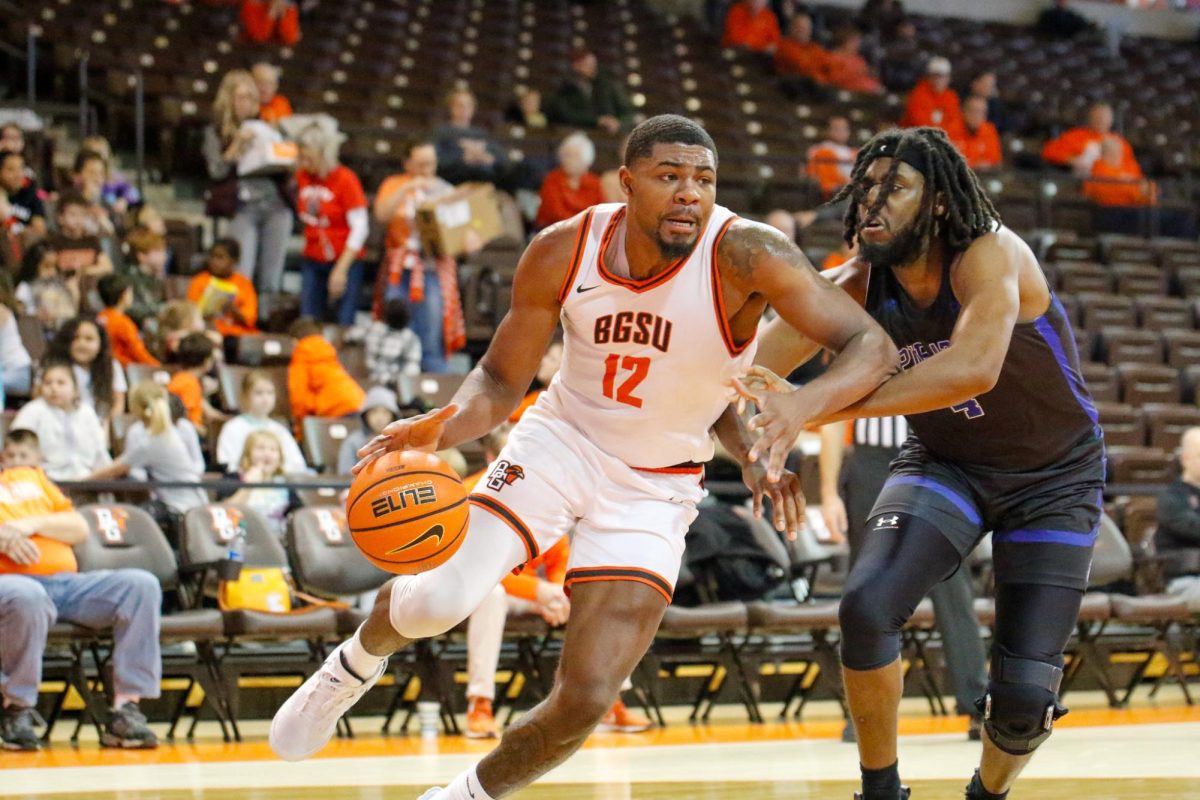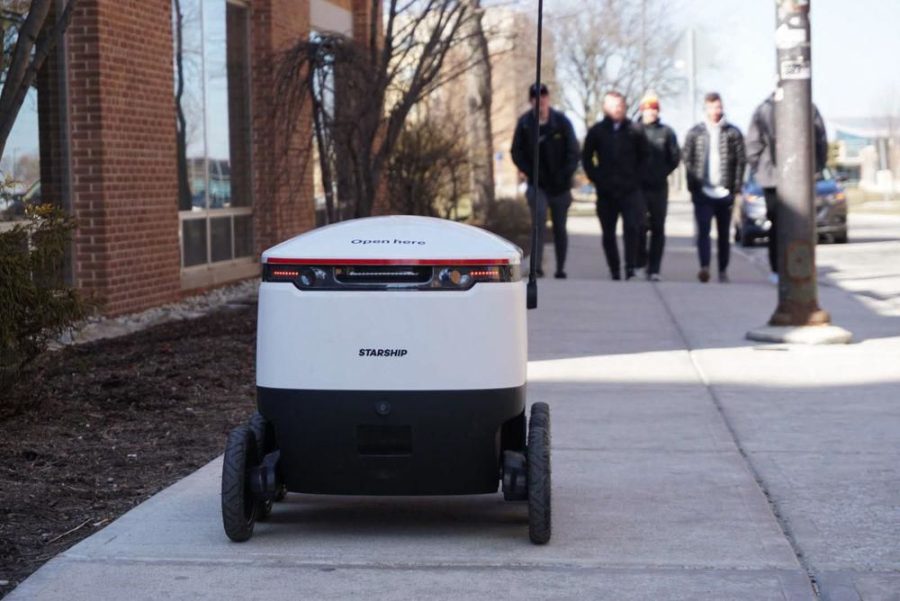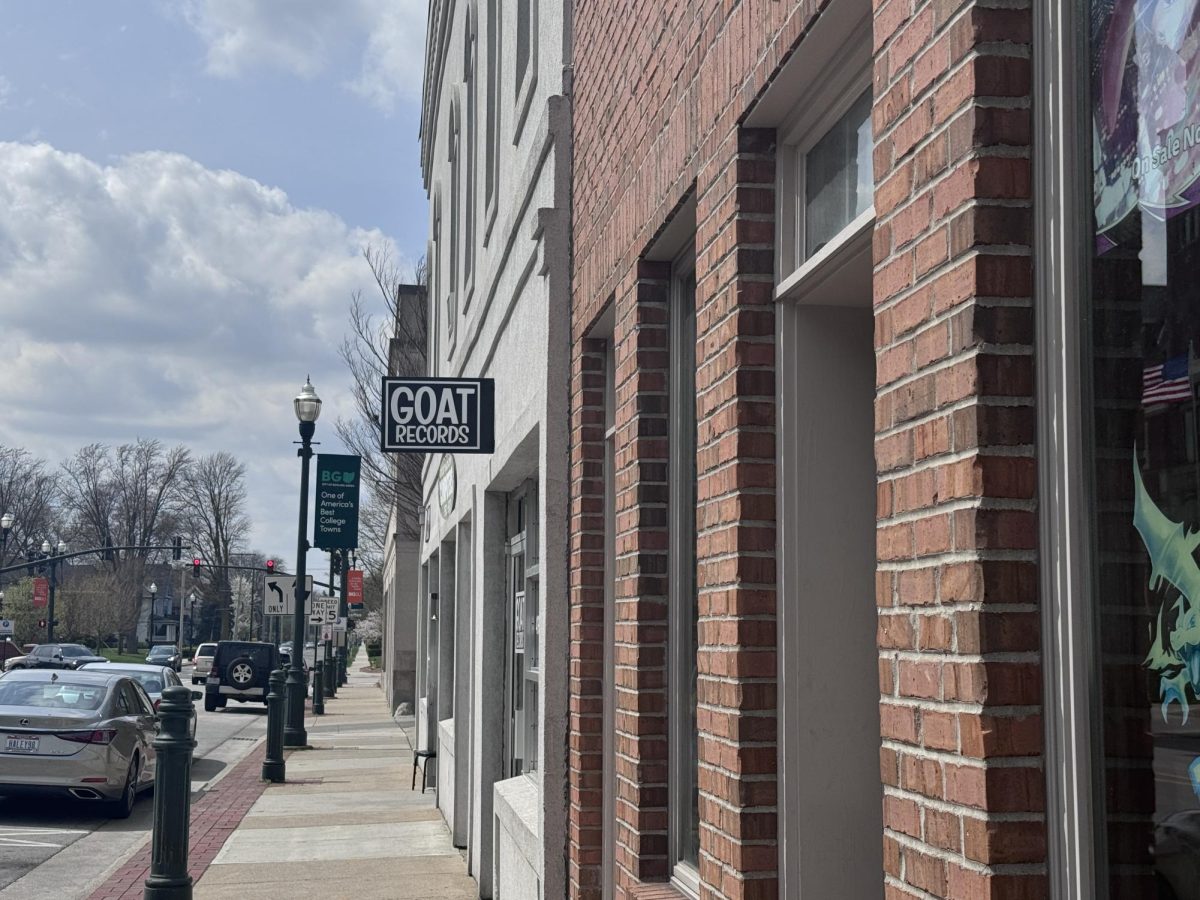On March 2, a new kind of worker showed up to campus – the Starship robot. Since then, the climate on campus has changed considerably, with COVID-19 dangers causing Ohio Gov. Mike DeWine to call a state of emergency and the University to temporarily move classes online. However, the robots have continued to go across campus to make their deliveries.
Cole Burley, a senior computer science major, and vice president of the Falcon Robotics organization, was surprised at the deployment.
“I didn’t think there were companies doing it. I’m pleasantly surprised that something like that works on campus so well,” he said.
Much of the technical work behind the scenes goes into making robots that work reliably in real world environments. The robots have cameras on them, but also have another type of sensor that lies below the cameras.
Kassidy Biss, a social media intern at Starship who got in touch with the engineers behind the robots, wrote, “Those are ultrasonic sensors, similar to those found in cars used to help identify obstacles when reversing.”
Burley agreed, having used similar sensors himself.
“They’re moving so slow; ultrasonic sensors are fine for their purpose in my opinion,” he said. He also noted that for higher-speed autonomous vehicles, such as cars, faster sensor technologies such as Light Detection and Ranging (LiDAR) are preferred.
The robots must also make decisions based on their observations. Biss reports on how their robots make the choices that they do.
“The robot has obstacle detection. It has a ‘situational awareness bubble’ around it – featuring a combination of 10 cameras, ultrasonic sensors, radars, neural networks and more to detect obstacles, whether that is a dog or a pedestrian/cyclist. The robot will always stop at a safe distance,” she said.
Battery safety is another concern. Many students are familiar with the ban on Hoverboards the Office of Residence Life instituted in 2016 due to the risk of exploding batteries. Biss insists that their batteries are closely monitored for safety.
“Robots use a proprietary battery that can last all day. All robots are monitored from our robot command center, so if anything happens, on-site Starship staff can act immediately.”
This is different from most hoverboards — which are not being monitored by staff. The Starship Robots currently do not enter on-campus buildings, mitigating a potential fire-safety risk.
Biss expects that summer operation will be no challenge, similar to the current winter operation, stating that “The thermo-bag in the robot is designed to keep both cold food cool and hot food warm.”
BGSU being chosen as the first location in Ohio to receive these robots was not by accident. A BG Falcon Media interview with Starship launch manager, Hanna Sippos, revealed that “Robots love this campus, it’s flat.”
Thanks to the hard work of campus operations complying with ADA in the early 1990s by improving sidewalk conditions and adding curb cuts, the campus is also more robot friendly.
“There is no question that ADA mandates help facilitate Starship’s operations in the United States. In the other countries, where Starship operates, the company is also fortunate to have similarly helpful infrastructure,” Biss said.
On if the robots would travel off campus in the future, Biss claimed that “The robot is designed to deliver goods on the last mile of the delivery journey – within suburban, residential areas or on university campuses. They currently deliver within a three-mile radius but can go further.”
About the design of the robots and their personality Biss said, “We love hearing about the personalities people think our robots have – it warms our hearts.”
Biss said that Starship plans on integrating the robots more with campus events, having dressed them up for festivities in the past.
“Recently the robots did dress up for Halloween, and we got lots of photos from students who also dressed up as robots. Follow us on Instagram and check the app to see the latest promotions,” she said.
One such promotion is a papercraft contest which Biss describes as, “The papercraft contest is featured on our Instagram. It was included in our Medium article about how the robots see the world. The papercraft is for everyone to bring the joy of Starship robots into their own home.”
Dr. Mohammad Mayyas, a professor in the College of Technology and roboticist expects that what students are seeing now is just the beginning, saying “The deployment of autonomous ground and aerial vehicles for civilian applications is getting popular nowadays and what we are experiencing in BGSU is a testimony of how future service robots look like.”
BGSU Dining Services announced in an email on March 16 their intention of continuing robotic delivery to those who remain on campus. The email noted that any remaining restaurants normally able to serve via Starship will remain available for delivery, with the number of restaurants remaining open being based on the remaining campus population.
The message also noted that the fleet of robots has been expanded to over 40. Given that DeWine ordered restaurants offer only takeout and delivery on March 15, it is likely that these robots will play a vital role in feeding those who are unable to leave campus.






